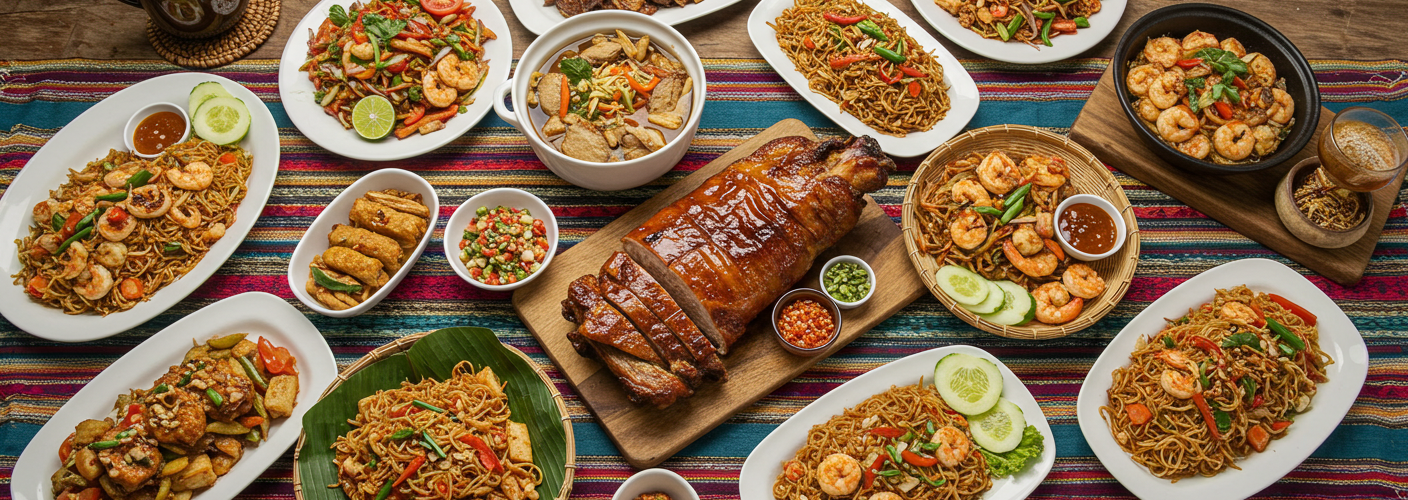The Philippines is a beautiful archipelago known for its rich culture, stunning landscapes, and most importantly, its incredible food. The country’s culinary scene is as diverse as its islands, heavily influenced by a blend of indigenous traditions and foreign flavors. Food in the Philippines is more than just sustenance; it is at the heart of community gatherings and family celebrations. Here, we’ll explore some of the must-try dishes that every food lover should taste when visiting the Philippines.
Adobo: The National Dish
No discussion of Filipino food is complete without mentioning adobo. Often considered the national dish, adobo is a savory stew typically made with chicken or pork marinated in soy sauce, vinegar, garlic, and spices. The meat is simmered to perfection, resulting in tender pieces soaked in a flavorful sauce. Each region has its unique take on adobo, reflecting local ingredients and cooking techniques. Whether you enjoy it with rice or as a filling for sandwiches, adobo is a comforting staple that represents the heart of Filipino home cooking.
Sinigang: The Sour Soup
Sinigang is a traditional Filipino soup known for its tangy flavor, primarily derived from tamarind. This dish usually features pork, shrimp, or fish combined with various vegetables like radish, eggplant, and leafy greens. The blend of sourness and umami creates a comforting bowl perfect for rainy days. There are many regional variations, including Sinigang na Baboy, which uses pork, and Sinigang na Hipon, made with shrimp. Each version offers a delightful taste of Filipino culinary creativity.
Lechon: The Star of Celebrations
When it comes to festivities, nothing matches the grandeur of lechon, or roasted whole pig. Its crispy skin and tender, flavorful meat make it a showstopper at parties, weddings, and even casual family gatherings. Often served with a liver-based sauce, lechon offers an unforgettable experience for anyone fortunate enough to indulge. Each region has its own lechon specialties, with Cebu’s lechon being particularly celebrated for its herbal flavor and perfect seasoning.
Pancit: Noodle Dishes for Good Fortune
Pancit, a term for various types of noodles in the Philippines, symbolizes longevity and good fortune, making it a popular dish for birthdays and celebrations. One of the most famous varieties is Pancit Canton, which includes stir-fried noodles mixed with vegetables, meat, and seafood. Another beloved version is Pancit Malabon, featuring thick rice noodles topped with a rich seafood sauce. Regardless of the type, pancit is always a crowd-pleaser and an essential part of Filipino celebrations.
Halo-Halo: A Sweet Ending
To cool off from the tropical heat or to satisfy a sweet tooth, halo-halo is the ultimate Filipino dessert. This colorful concoction combines crushed ice with a mix of ingredients such as sweetened beans, jellies, fruits, and leche flan, all topped off with a scoop of ube (purple yam) ice cream. Each layer creates a delightful burst of flavors and textures, making halo-halo a must-try for anyone looking to explore the sweeter side of Filipino cuisine.
Conclusion
Filipino cuisine is a vibrant tapestry of flavors, textures, and cultural influences. Whether you’re indulging in savory dishes like adobo and sinigang or delighting in the sweet, refreshing halo-halo, the food of the Philippines offers a culinary adventure that reflects the warmth and hospitality of its people. So whether you’re a local or a tourist, take the time to savor the diverse offerings of All Philippines Food because each meal tells a story worth celebrating.




Add comment